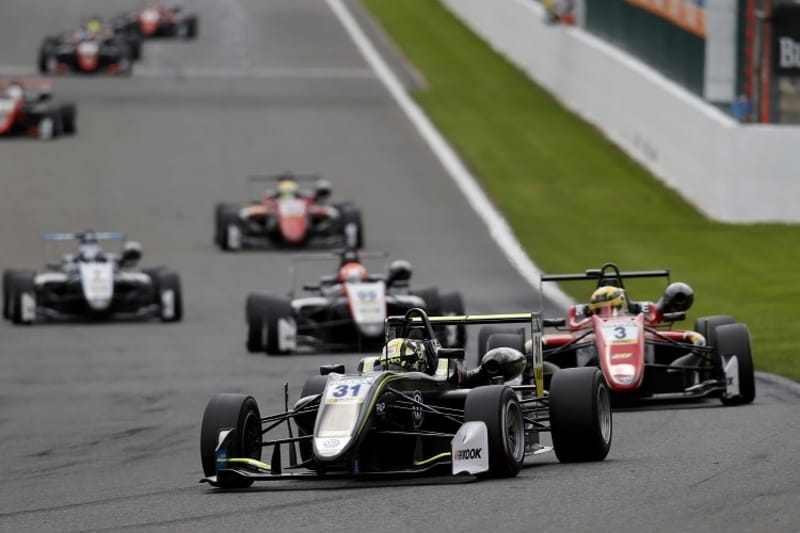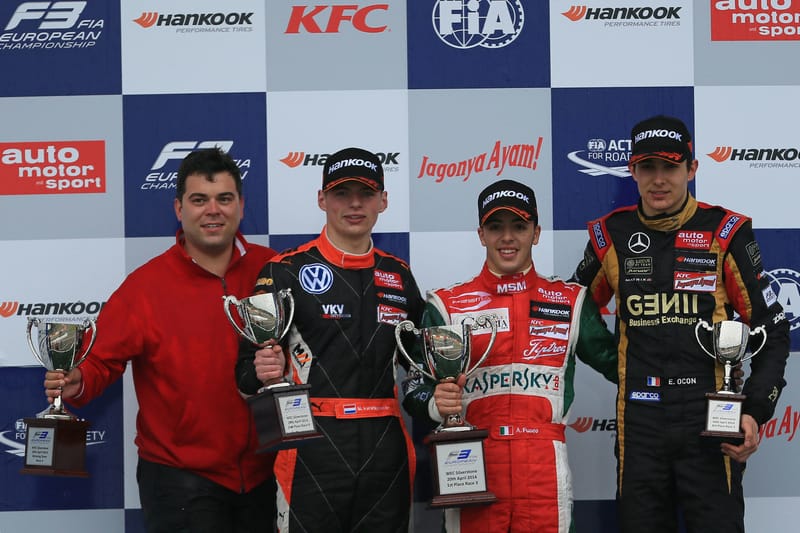The cancellation of the Formula European Masters confirmed the demise of an international European Formula 3 tradition stretching back to the creation of the Formula 3 Euro Series in 2003. With the category having flourished under the guise of the FIA Formula 3 European Championship, the failure of promoter Formel 3 Vermaktungs (F3V) to preserve the series for 2019 follows the FIA’s withdrawal in favour of the new GP3-derived FIA Formula 3 Championship.
The news also inadvertently announces the completion of the FIA’s so-called Global Pathway initiative, finalizing the governing body’s longstanding mission to create a linear pyramid of FIA-affiliated Formula 1 feeder series. When ex-F1 driver Gerhard Berger was announced as the FIA’s Single-Seater Commission president in 2012, his stated aim was coherence. Speaking in the wake of his appointment, Berger said, “The system no longer does what it is supposed to do, which is to give a highly talented driver a CV he can use to progress through to Formula 1.”
“There are too many championships out there and attention between them is split too much. People are complaining that the best drivers are now all spread out so you cannot look at British Formula 3, for example, and say that [a driver] is certain to get to Formula 1.
“The most urgent thing is to sort out F3. For me, this has always been the most important class for young drivers. This is where you can really see for the first time how much talent someone has.”
Berger’s three-point plan was to incrementally streamline single-seater racing, starting with F3, moving on to second-tier championships before finally restructuring what would become known as Formula 4. Ultimately this would morph into the FIA Global Pathway. However, Berger would only remain in the role long enough to address F3, departing in December 2014, gratuitously shortly before the announcement of the FIA’s superlicense points system.
Taken as a whole, the FIA’s measures would prove something of a curate’s egg. In the FIA F3 European Championship, there would evolve an entirely new standard of junior series racing in terms of both depth and quality. In the superlicense system, there was a thinly-veiled attempt to undermine non-FIA championships whilst creating an arbitrary and unnecessary talent-spotting scorecard.

Credit: FIA Formula 3 European Championship / Thomas Suer
The 17-year-old Max Verstappen’s F1 debut was both the unspoken justification for the introduction of the system and the finest example why it was never needed in the first place. Not that ‘underage’ drivers were the principal reason for implementing the points table. Instead, it would prove an effective means of uprooting obstacles to the Global Pathway. Given the FIA’s stated aspiration to streamline the junior series ladder, it was certainly unsurprising how non-FIA feeder series contributed so little to the requisite 40 points – with the Formula Renault 3.5 champion accruing just 30 points.
It was arguably even less surprising – given the series was no longer a fully credible F1 feeder – that Renault withdrew its support from the championship, precipitating a protracted and painful demise. With the GP2 Series rebranded as the FIA Formula 2 Championship, and with GP3 set to become FIA F3, the FIA’s vision of a coherent, orderly ‘Pathway’ of approved, affiliated championships was in ever sharper focus.
As of 2018, the only real blemish to the perfect symmetry of the FIA’s pyramid was an obstacle of the FIA’s own creation: the F3 European Championship. Not that it needed to be an obstacle. Just as the GP3 Series had survived under the growing shadow of Euro F3, it was entirely likely that two materially different international F3 series could have coexisted harmoniously. The cull was unnecessary at best. At worst the removal of a consistent conveyor of F1 hopefuls threatens the efficacy of the entire Global Pathway.
Of course neither GP3 rights holder Bruno Michel, F3V nor the FIA never mentioned a ‘cull’ – instead, the transition was described as a ‘merger’ of European F3 and GP3. This was an odd choice of words considering the new Dallara F3 2019 will use the same 3.4L Mecachrome V6 as the old GP3 car, will race on the same weekend format as GP3 and will follow a calendar almost identical to GP3’s 2018 diary. FIA F3 promises to be a continuation of GP3 in everything but name. The irony therein, of course, is how much more effective European F3 has been at producing F1 drivers.
Since the FIA relaunched European F3 in 2012 the series has produced almost twice as many F1 recruits as GP3 – with Max Verstappen going on to become the youngest grand prix-winner in F1 history. Admittedly European F3 has produced fewer F1 drivers than GP2/F2 since 2012, but whilst many of the GP2 graduates only managed brief financially-motivated F1 careers, eight of the ten Euro F3 alumni are still on the grid in 2019. Without a doubt, under the FIA’s wing, European F3 became the best breeding ground for the next generation of F1 drivers.

Credit: Octane Photographic
But the purpose of the Global Pathway was meant to be about more than mining F1 drivers – it was meant to be creating a linear process to enable all drivers to fulfil their potential. The removal of European F3 removes a crucial steppingstone in the career of a young driver. In retaining the traditional F3 technical blueprint, FIA European F3 provided drivers with the opportunity to further adapt to the challenge of aerodynamic grip on the international stage without introducing additional variables such as tyre degradation and excess power.
By contrast, the GP3-style blueprint the FIA is following for 2019 will subject drivers at a similar stage of development to a car with at least 400bhp – around 160bhp more than the output of the Dallara F317’s 2.0L inline-4. There is a reason why all but two of GP3’s nine past champions have a background in some form of European F3.
With GP3 supremo Bruno Michel targeting a car that is “more difficult to drive” than its predecessor, the potent cocktail of greater tyre degradation and increased downforce clearly hasn’t been viewed in relation to the widening chasm opening up beneath FIA F3. A strong contingent of European F3 graduates might save the series’ blushes in 2019, but looking ahead it looks increasingly unlikely that Formula Renault and Formula 4 drivers will be making much of an impression in their first year of FIA F3. That would be an absurd outcome given a ‘linear’ development is the express purpose of the Global Pathway.
But was there room for two international F3 championships? Unquestionably. The rise of European F3 didn’t remotely erode the standing of GP3 across the seven years the two championships were running in parallel. The number of full-season entries – perhaps the most reliable yardstick of a series’ health – shows that both championships managed to maintain consistently healthy grids. A comparably disappointing year in 2018 for GP3 (in terms of both strength and depth) understandably followed a downgrade of superlicense points and widespread rumours of the series’ discontinuation.
The effective death sentence that was the FIA Single-Seater Commission’s decision to withdraw its support for European F3 was an unnecessary and regressive choice by any measure. With FIA F3 initially set to run under the title of ‘International F3’, there was every chance and every justification to maintain the new series’ thriving European roots.
It’s difficult to see how the loss of a category described by Gerhard Berger as “the most important class for young drivers” won’t cause structural problems further down the line. A bumper field of talent and an intriguing new car will doubtless make for an exciting inaugural season of FIA F3, but without the backing of its European sister-series, its long-term future looks challenging.



